Bernard Salt, the self-proclaimed “unabashed supporter of a bigger Australia”, has written reams of articles and reports advocating for rapid population growth and warning that failing to do so will result in an economic and fiscal catastrophe.
Over the weekend, Salt penned a waffling article in The Australian describing the joys of growing up in a detached house on a 1,011 square metre lot and decrying the loss of the Australian backyard:
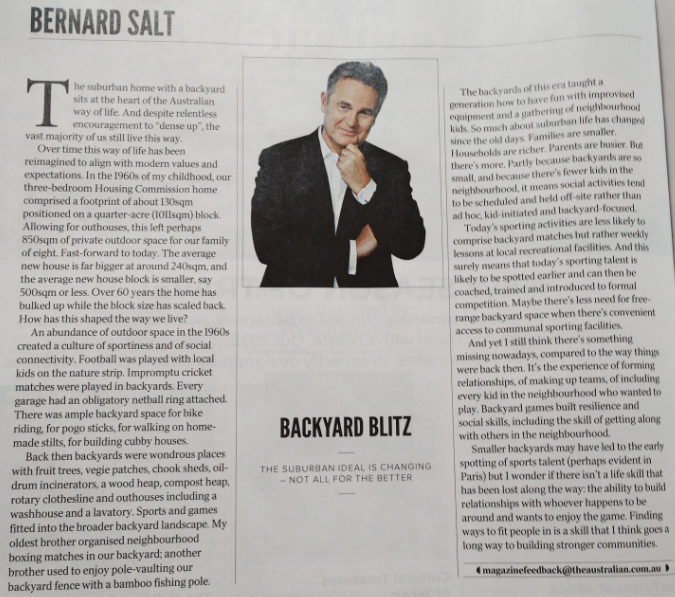
“An abundance of outdoor space in the 1960s created a culture of sportiness and of social connectivity”, Salt rejoiced.
“Football was played with local kids on the nature strip. Impromptu cricket matches were played in backyards. Every garage had an obligatory netball ring attached. There was ample backyard space for bike riding, for pogo sticks, for walking on home-made stilts, for building cubby houses”.
“There’s something missing nowadays, compared to the way things were back then”, Salt lamented. “It’s the experience of forming relationships, of making up teams, of including every kid in the neighbourhood who wanted to play”.
“Backyard games built resilience and social skills, including the skill of getting along with others in the neighbourhood”.
The loss of the backyard is a direct result of the Big Australia immigration policy that Salt himself has heavily promoted, which has forced densification.
The federal government massively increased Australia’s net overseas migration (NOM) in the mid-2000s, as seen in the chart below, and high immigration is projected to continue indefinitely:
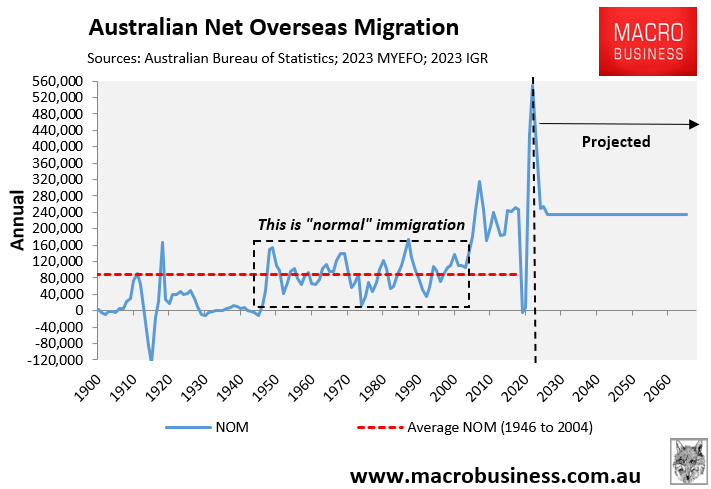
In the 15 years to 2004, Australia’s NOM averaged 91,000 annually. However, between 2005 and 2019, Australia’s NOM averaged 220,500 per year, a 142% rise.
Even throughout the last four calendar years (2020–2023), Australia’s NOM averaged 245,500 a year.
As shown in the chart below, Australia has experienced the fastest population growth since 2005 among major industrialised nations:

The chart below illustrates the population increase between 2001 and 2023 across the major capital cities:
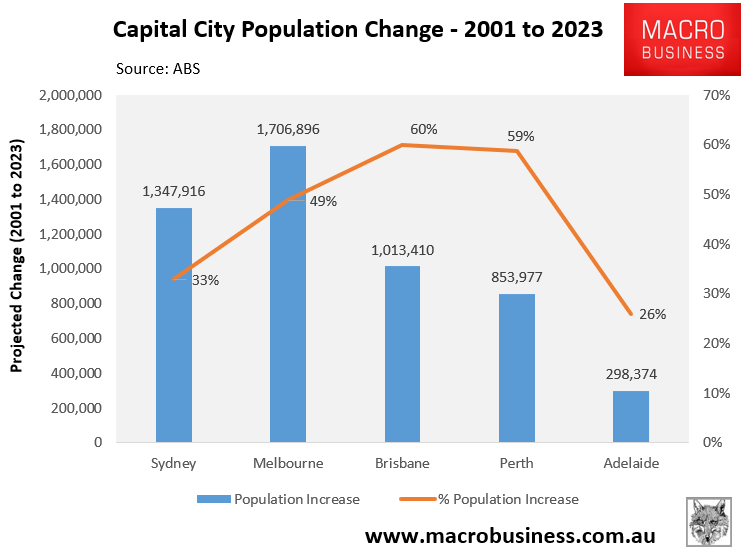
As you can see, population growth in the major capitals has been extreme, with Melbourne (1.7 million) and Sydney (1.35 million) recording the largest rise in numbers, and Brisbane (60%) and Perth (59%) experiencing the strongest growth in percentage terms.
According to Australian Bureau of Statistics (ABS) projections, Australia’s population will reach 43.9 million by 2071, an increase of almost 16.5 million from the current 27.4 million:
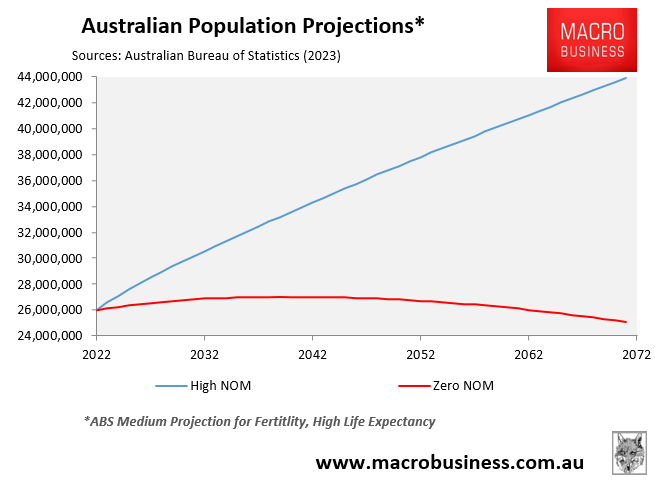
This is akin to adding another Sydney, Melbourne, Brisbane, Perth, Hobart, and Canberra to Australia’s present population in just 48 years!
To accommodate the expected population increase, at least 7.5 million dwellings would need to be built, with demolitions factored in. Most of these will be in the existing urban areas, meaning the loss of more backyards to high-rise apartments.
It is also worth noting that Australia took 212 years to reach its population of 19 million in 2000. However, the population is expected to increase by another 24.9 million people in only 71 years!
The following chart compares the actual populations of Australia’s major capitals in 2001 with their predicted numbers in 2071:
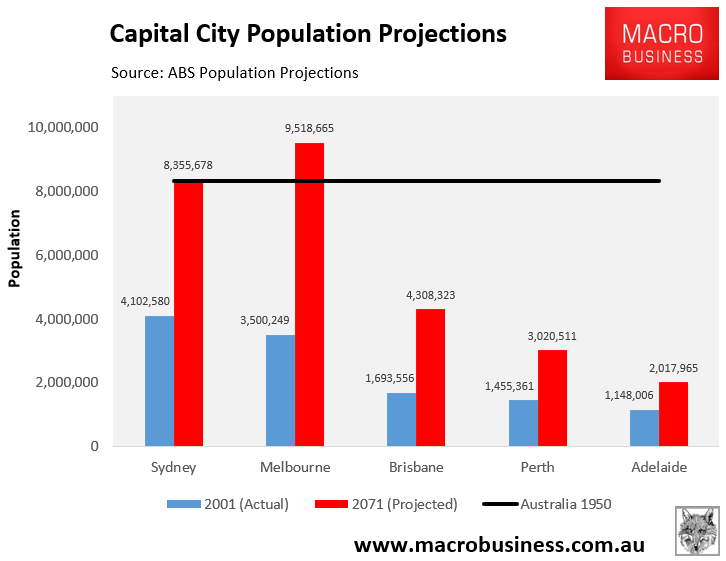
As you can see, Melbourne (9.5 million) and Sydney (8.4 million) are expected to have larger populations than the entire Australian population in 1950!
The following chart shows the projected population increase by major capital between 2001 and 2071 in both numerical and percentage terms:
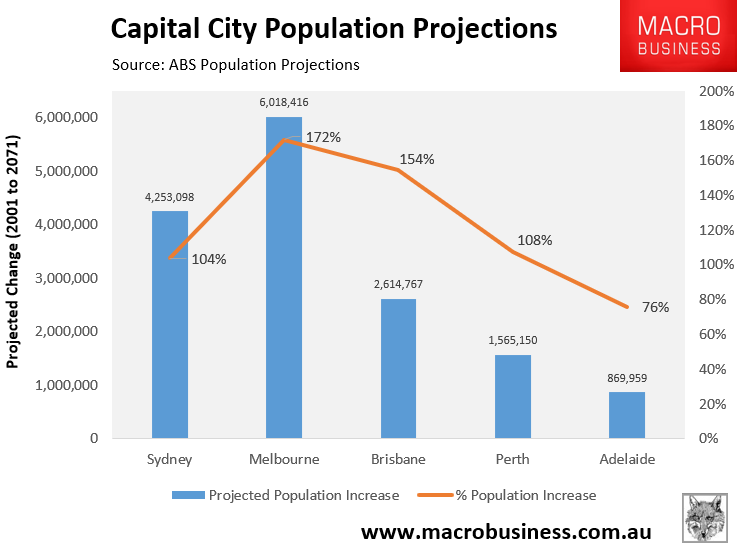
Melbourne, which is expected to grow by an astonishing 6 million people (172%) in just 70 years, is at the forefront of this unprecedented expansion.
No wonder backyards are disappearing. Extreme population growth through relentless immigration necessarily means the death of the backyard.
Indeed, projections from the Urban Taskforce show that Sydney’s dwelling composition will transform from 57% detached housing in 2016 to just 25% detached housing by 2057.
By contrast, the share of dwellings that are apartments will rise from 30% in 2016 to 50%:
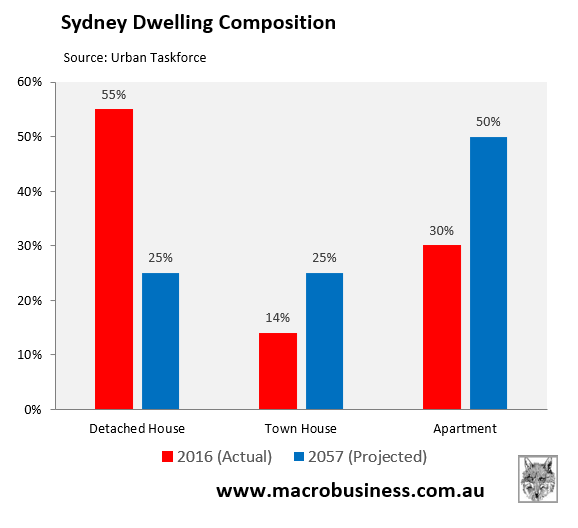
Melbourne will experience similar issues, given that its population is projected to increase by an insane 6 million people in only 70 years (see above).
Influential commentators like Bernard Salt are the problem. They have actively advocated for a Big Australia, only to then shed crocodile tears at the harmful outcomes for living standards.

